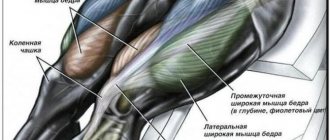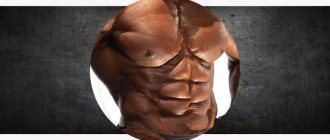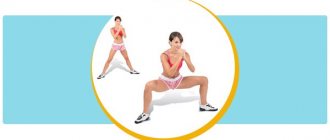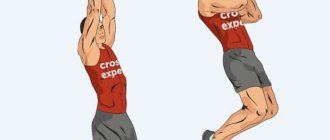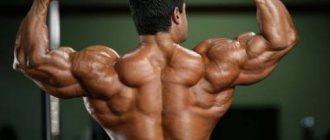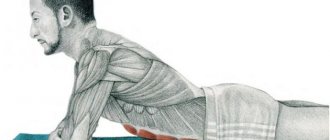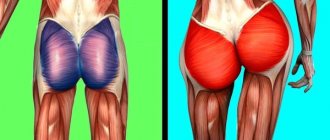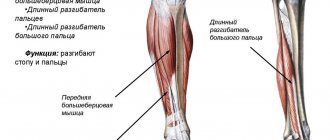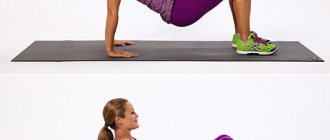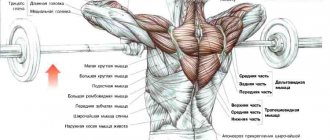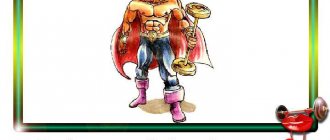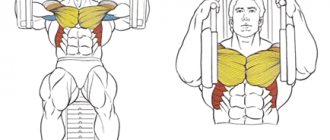Hello, dear bodybuilding lovers, I am glad to welcome you again to the pages of the “ABC of Bodybuilding” project! I am sure that the topic that we will touch upon today will literally leave no one indifferent. Why is this, you ask? Everything is very simple, because this topic is the cornerstone of bodybuilding, on which the entire process of building a beautiful and muscular body is based. Without knowledge of at least the basic principles from this direction, there can be no talk of any significant results in improving body proportions.
Well, I think you have already guessed that today’s conversation will be devoted to the topic of human muscles.
So, on the agenda is consideration of such issues as: anatomy of human muscles (structure, functions and classification), types of muscle fibers and their role in matters of building an aesthetically correct body composition. In general, we will try to explain everything that a beginner in bodybuilding needs to know (about muscles) at the initial stage.
Go…
Human anatomical atlas: structure, classification and functions of muscles
I have long wanted to cover this issue, because... I consider it the most important technical and theoretical moment of bodybuilding, because you understand - trying to build a sculpted body without knowing at all (or having a vague idea) of what you have to work with is simply the height of indecency :).
However, I deliberately postponed consideration of this issue until now, because... It’s very difficult to immediately grasp the theoretical part - the anatomy and physiology of muscles, especially when you don’t even know the basics, such as: body types, types of physical disciplines and the path to success in bodybuilding. However, now this does not threaten you, you are already prepared and know these basic truths, which means it’s time to dig deeper and understand another important topic.
So, every beginner (and not only him) in bodybuilding is simply obliged to know as much as possible about the muscles, their functions and structure, because this way he will achieve much more impressive results than his brothers in iron. Agree, wanting to pump up muscles and not knowing the basic fundamentals of their physiology smacks of insanity. Although, I’ll tell you a secret, when you start asking gym regulars what kind of muscle they are working out or where the brachialis is located, they make such eyes as if they don’t understand what we’re talking about at all. Well, okay, closer to the body.
So, a human muscle is an organ of the body (soft tissue) consisting of muscle fibers capable of contracting under the influence of nerve impulses and providing the basic functions of the human body: movement, breathing, nutrition, resistance to stress, etc.
From this definition we can immediately draw a very obvious conclusion that the brain and muscles are interconnected (what it orders will be done), therefore, the “brain-muscle” connection (or rather, on the speed of the neuromuscular reaction) depends muscle pumping efficiency. And one more conclusion that follows from the previous statement is that we need to work not only on pumping up muscles, but also on reducing the response time of the neuromuscular reaction, i.e. be friends with your head.
Let's move on.
The muscle consists of striated, striated bundles of muscle fibers running parallel to each other, which are connected by connective tissue into first-order bundles. Several such beams are connected and form beams of the second order, etc. All these muscle bundles are united by a special membrane, making up the muscle belly (see image).
When a muscle contracts (under the influence of nerve impulses), it is distinguished between an “actively contracting” part - the abdomen and a passive part, with the help of which it is attached to the bones - the tendon. Considered in general, skeletal muscle is a complex structure consisting of striated muscle tissue, various types: connective (tendon) and nervous (nerves of muscles) tissues, endothelium and smooth muscle fibers (vessels).
Well, is it impressive?
From all this it is worth remembering that the predominant muscle structure is striated muscle tissue, the property of which (contractility) determines the function of the muscle as an organ of contraction. The human body consists of various muscle groups - a complex of several muscles that perform the same motor function. When performing similar exercises in the same movement, almost all muscles from one muscle group are usually included in the work.
Let's move on to the classification, and the easiest way to present it is in the form of the following summary table (see table).
Let's analyze and analyze some classifiers.
No. 1. According to form
There are short, long and broad muscles. The habitat of long muscles (mainly) is the limbs; with their help, exercises are performed with a full range of motion. For example, the barbell curl is one such exercise that works this type of muscle.
Long ones are “tadpole” muscles, because consist of three parts: the beginning of the muscle is the head, the middle part is the belly of the muscle, and the end of the muscle is the tail. Their shape is similar to a spindle; the tendons have the appearance of a narrow ribbon. Prominent representatives of the long muscle family are those that end in “-ceps”: biceps (biceps), triceps (triceps), brachii, quadriceps (see image).
Also, long ones include those that are formed as a result of the fusion of muscles of different origins, usually these are multiabdominal muscles, having 2 or more bellies. A prominent representative is the abdominal and other abdominal muscles.
The vastus muscles are located mainly on the torso and have an extended tendon. Prominent representatives of the broad muscle family are, for example: the superficial muscles of the back and chest. The short muscles are similar in shape to either the long or wide muscles, but are significantly smaller in size compared to their counterparts.
There are also other forms of muscles: round, deltoid, soleus, gastrocnemius, etc.
No. 2. By grain direction
There are:
- Straight-parallel;
- Oblique;
- Transverse;
- Circular.
Straight-parallel movements allow the muscle to significantly shorten during contraction, which provides a greater amplitude and increased trajectory of movement. The oblique muscles are inferior in their ability to shorten, but due to the fact that they are more numerous, they are able to develop greater force.
And to confirm these words, here is an example from training life.
Often, due to ignorance of the anatomical features of the muscles, people try to give a load to the muscle for which the latter, in principle, is not designed by its nature. For example, due to the fact that the biceps belongs to the type of rectus/parallel/longus muscle (according to the classification), it a priori will not be able to take the weight that the oblique muscle will pull, but the latter, due to its numerous fibers, will easily develop greater strength (traction) force. Well, in order to understand this, you need to know the basics of physiology, muscle anatomy and understand the principles of their work (we’ll talk about the latter later).
So, the next ones are the transverse and orbicularis muscles. Transverse ones are similar to oblique ones and perform largely similar types of work, but circular ones differ from them in that they are located around the openings of the body (for example, the mouth muscle) and narrow them through their contraction. The second name of these muscles is compressors or sphincters, the most popular of them is the sphincter of the “fifth point”.
Let's move on.
No. 3. Patterns of muscle location
It would be naive to believe that there are no patterns in the distribution of muscles throughout the body, of course there are, and they sound like this:
- According to the structure of the body and taking into account the principle of bilateral symmetry, the muscles are paired or consist of two symmetrical halves. And thank God it’s symmetrical, otherwise imagine a face made of two different halves, what a picture. Although, after a series of holidays, some people can observe a clear distortion, for example, of the facial halves :);
- The human body and, in particular, its torso, consists mainly of segments (separate independent elements) of muscles. Those. this is not some kind of continuous general layer (although the broad abdominal muscles are of this type), but there is a clear (sometimes conditional) division into sections, for example, the rectus abdominis muscle can be conditionally divided into the upper and lower sections;
- Muscles are located along the shortest distance between their points of attachment. The movement produced by the muscle occurs in a straight line, therefore, knowing the points of attachment of the muscle, and the fact that the moving part is attracted to the stationary part, one can determine in advance the direction of movement and the function of the muscle;
- The muscles, throwing themselves over, cross at right angles the axis in the joint around which they produce their movement.
So, we’ve sorted out the classifiers of muscles and the geography of their location, now let’s look at some technical aspects in pumping up high-quality muscle mass, which few people pay attention to or do not take into account at all.
I want to dedicate this article to the very muscles that we so want to pump up, although many beginners (and not so beginners) don’t even know what function they perform in the human body and what kind of exercises they need to train.
Let's start from the top, as shown in the figure, namely, with the back muscles
1) Trapezius The trapezius, as can be seen in the figure, refers to the muscles of the upper back, with the help of the trapezius we raise our shoulders. To develop these muscles, exercises such as “shrugs” (standing, lying, sitting) with a barbell or dumbbells are done. For example, I am not comfortable with a barbell.
2) Latissimus In slang, the latissimus dorsi muscles are called “wings”; it is these muscles that give our pumped up bodies the shape of a triangle, and are especially clearly visible from the back. They take on the function of bringing the shoulder blades together and spreading them, therefore, they train with the help of exercises in which the shoulder blades are brought together, mainly these are: bent-over rows, T - rows, dumbbell rows, and read more types of rows
3) Longus dorsi muscle This is one of the most powerful muscles in humans; it is responsible for flexion and extension of the torso. To train this important muscle, deadlifts and its variations are used.
4) Pectoral muscles The pectoral muscles make up a fairly large percentage of all human muscles, the pectoral muscles pump everything without exception, since the bench press is the favorite exercise of the average gym goer. However, not everyone knows that the chest works better in the dumbbell press than with the barbell. The main exercise for the chest is the bench press at different inclines, as well as all kinds of flyes and dumbbell presses. It is worth noting that the chest is conventionally divided into several parts: upper, outer, inner. However, breast shape still greatly depends on genetics.
5) Press The press works when flexing and extending the torso. There are a lot of exercises for the abs, but I consider only those in which the lower back does not come off the support to be effective, since in other exercises only some parts of the abs are worked and there is unnecessary stress on the lower back. My choice is twisting with concentration or twisting on a block. I will also say that abs will be visible only in a person who has a very low level of subcutaneous fat. And fat tends to accumulate in the abdominal area.
6) Delta Delta is a small muscle - it is divided into three bundles: anterior, middle and posterior. With the help of the delta, we can raise and lower the arm, as well as rotate it in different directions. To train the deltas, the basic exercises are: chest press (front bun) and overhead press (middle bun). You can also use dumbbell presses and swings.
7) Biceps Biceps are also a relatively small muscle, but having big biceps is the dream of any novice bodybuilder. Using the biceps, we bend the arm at the elbow joint. Basic exercises for biceps are standing barbell curls, as well as all kinds of dumbbell curls.
8) Triceps Triceps is the largest muscle on the arm; the muscle is an antagonist of the biceps, that is, it is used to extend the arm. Many people mistakenly believe that arm girth depends on well-developed biceps, however, this is not true; arm girth depends more on good triceps. To pump up the triceps, the basic exercises are: close-grip bench press, French bench press and all kinds of arm extensions.
9) Forearms The forearms are a small muscle in the arm that serves to make a fist, move the fingers, and rotate the wrist. I consider the deadlift, as well as pull-ups, to be the basic exercise for the forearms; in fact, the forearms are involved in almost all bodybuilding exercises.
10) Gluteal muscles The gluteal muscles are not popular among men who exercise, but women, on the contrary, are paying more and more attention to these muscles. These muscles work when a person squats very deeply, therefore, the best exercise for the buttocks is deep squats and lunges with dumbbells or stepping on a platform.
11) Femoral biceps The femoral biceps is needed to bend the leg. The most effective exercise for the hamstrings is straight-legged deadlifts and leg curls on a machine.
12) Quadriceps Quadriceps is the largest muscle of the legs, an antagonist of the biceps femoris, needed to extend the leg. A basic quadriceps exercise is the squat and leg press.
13) Calves The calves (lower leg) are the strongest muscle in the legs, despite their size, because when we walk, they are tense all the time. You need to train your calves with an exercise such as calf raises while standing or sitting.
That's actually all I wanted to tell you about the main muscle groups. Of course, these are not all human muscles, but only the main ones, but this information should at least be enough to not torment others with stupid questions. For example, “What exercise should you do for biceps?”
Human muscles: an introduction to mechanics. How it works and works.
Cellular structure and muscle contraction
We all know that any living organism consists of cells - the smallest structural unit. So, the structural unit for muscles is myofibril - the thinnest threads running lengthwise from one end of the muscle fiber to the other.
Because muscles (for the most part) perform a contractile function, then to ensure this activity, active elements are used - protofibrils in the form of the proteins actin (long and thin fibers) and myosin (fibers that are short and twice as thick as actin). In different types of muscles, for example, in smooth and skeletal muscles, protofibrils are located differently. Thus, in smooth ones, the latter are located disorderly and, predominantly, along the periphery of the inner surface of the myofibrils. In skeletal muscles, actin and myosin are strictly ordered and occupy their entire internal cavity.
You can observe the following picture: places where actin fibers partially enter between myosin fibers appear as dark stripes, while other particles appear as light stripes, which is why such myofibrils are called cross-striped.
In general, in its most general form, the mechanism of muscle contraction is as follows: when the muscle contracts, myosin fibers, using the energy of ATP (adenosine triphosphoric acid), move along the actin fibers, thereby providing the main function of the muscles (see image).
Myosin plays the role of the enzyme adenosine triphosphatase in this process and promotes the breakdown of ATP and the release of energy.
Summarizing all of the above, it should be remembered that smooth muscles (due to their structure) contract relatively slowly (from a few seconds to 1-4 minutes), while striated muscles can contract very quickly (in a fraction of a second). Keep this in mind when working with one type of muscle or another.
Next, let's look at...
How muscles work: elements of biomechanics
In this subsection, it is appropriate to recall the saying: “What driver doesn’t like driving fast?” In relation to bodybuilding, we can say this: “What beginner doesn’t want to pump up a big, shapely body?” But knowledge of the principles of biomechanics of muscle function will help to do this, i.e. It is important to understand what processes and, most importantly, how they occur when working with iron.
Agree, there is something when, when you pick up a dumbbell, you don’t just do a memorized exercise on autopilot, but you understand what is happening in your muscles at that moment. Understanding these issues will move you towards the quality and quantity of muscles on your body.
So, the main property of muscle tissue (as we have said many times) is contractility. This process is a shortening of the muscle and the bringing together of the two points to which it is attached, with the movable point being attracted to the stationary one.
Acting in this way, the muscle not only produces traction (moves the load), but also performs mechanical work. And now - attention! The strength of a muscle depends on the number of muscle fibers included in its composition and is determined by the area of the physiological diameter, i.e., the area of the cut in the place through which all muscle fibers pass. Thus, the length of the muscle affects the magnitude of its contraction.
In a sense, one can compare bones moving in joints under the influence of muscles with mechanical levers for moving objects of varying degrees of weight.
Thus, it turns out that the farther the muscles are attached from the place of support, the more effective it is, because thanks to the increase in the lever arm, their strength can be better used - theoretical mechanics, 3rd year of the institute, dear comrades.
Based on the “lever concept,” a distinction is made between strong muscles, which are attached far from the fulcrum, and dexterous muscles, which are attached near it. The first (for example, soleus) perform static work better. They are characterized by a large surface of their origin and their attachment point is close to the point of application of gravity. Also, strong muscles are richer in blood vessels and muscle pigment (myoglobin), their color is darker, which is why they are called red.
These muscles do not get tired for a long time and during work they show great strength with little tension. However, good strength indicators affect the speed and scope of their movement during contraction, which are small. We can say that strong muscles are certain supporting points of the entire human musculature.
The situation is completely different with dexterous muscles. They (for example, the biceps femoris muscle) are characterized by long, usually parallel fibers, with a small area of origin and insertion, as well as fewer blood vessels, and are therefore called white muscles.
These muscles are characterized by rapid contraction and, working with great tension, get tired quite quickly. Although white muscles are inferior in strength to red ones, they are capable of quickly and explosively performing a variety of movements. More often you can find these names for these fibers: slow (red) and fast (white) or fibers of the first ( I ) and second ( II ) types (see image).
In the human body, muscles contain both red fibers - static type, and white fibers - dynamic. Basically, 3/4 of the people on the planet have the following percentage of red and white fibers: 60/40 , i.e. The former predominate, but professional athletes are outside these parameters. In general, up to 90% ' leg muscles are fast-twitch, and I was wondering why they were scratching so hard right from the start :).
Of course, with age (as well as the amount of load) the ratio of white and red fibers changes.
And yet, if throughout your life you do not lift anything heavier than a tablespoon or a TV remote control, then your muscle cells are renewed every 7 - 15 days. If you work out in the gym, work with hardware, then the renewal process accelerates, because any exercise (and especially with weights) provokes the occurrence of muscle fiber ruptures, thereby stimulating the growth of new cells.
Note:
In addition to the fact that each muscle has an “origin” (which usually coincides with the fulcrum) and an attachment, its moving and immovable parts can change places.
In general, a large number of exercises in bodybuilding, where movements are performed in opposite directions (flexion/extension - abs, adduction/abduction - working with dumbbells, etc.) require the participation of at least two mutually located muscles. Such human muscles acting in mutually opposite directions are called antagonists. It is thanks to them that smooth movements are ensured. So, if there are antagonists, then there are muscles opposite to them, the resultant of which passes in one direction and they are called agonists, or synergists. It should be understood that the same muscles can act as both synergists and antagonists.
Now we will consider the issues of involving muscles in work and the processes of their blood supply.
Muscle work: neuromuscular activity
A muscle is a soft and elastic body that can be stretched by external forces. Therefore, as soon as the stretching process begins, excitation occurs in its receptors, reaching the central nervous system , which then returns back to the muscle, causing its tension (counteracting stretching).
Any work is characterized by its efficiency . The efficiency of muscle work is the developed “muscle-strength” traction and the amplitude (span) of the movement of the latter. By traction force we mean the amount of tension that develops in a muscle when it is excited. The traction force is directly dependent on the number and direction of the fibers. A muscle is stronger the more muscle fibers it contains. However, it is almost impossible to count the latter. Therefore, there is such a thing as the physiological diameter of a muscle, and it is by this that the strength of the latter is determined.
Note:
Physiological diameter is the cross-sectional area of a muscle in a plane perpendicular to the length of all its fibers. Each square centimeter of the physiological diameter of a muscle can withstand an average of 10 kg of load.
Also, a parameter characterizing the work of a muscle is the range of movement, which depends on the nature of the bone skeleton, on the length of the muscle belly and “lever arm,” as well as on the muscle itself.
It is worth mentioning another important point related to the force developed by the muscle. The degree of muscle excitation is of great importance for the traction force. The stronger the stimulating effect of the nervous system, the greater the number of muscle fibers that are excited, the greater the traction force. The influence of the nervous system, like the circulatory system, depends on the general condition of the body, the type of higher nervous activity, etc.
Trophism and innervation of muscles
In addition to the fact that the work of muscles, like other organs, is regulated by the nervous system, the circulatory system also contributes to control.
As we understand (we understand, right? :)), muscles perform a simply colossal amount of work, and metabolic processes in them proceed very actively, so it is no wonder that they have an extensive network of blood vessels through which blood supplies nutrients to them substances and oxygen, and removes metabolic products.
It is worth noting that, of course, not all muscles are equally supplied with blood vessels. For example, those that work almost “day and night” (diaphragm, heart, etc.) have an extensive circulatory network. Those that are involved in work intermittently, for a short period of time, do not have such a network (for example, biceps, rectus abdominis, etc.). The nerve ending of any muscle is receptors or effectors, which are located wherever possible: in muscle tissue, tendons, etc.
From the lips of many successful bodybuilders you can hear the following words: “in exercises you need to feel the muscle,” this feeling is achieved by receptors perceiving a certain degree of contraction/stretching of the muscle. Thus, signals are transmitted through nerve fibers, like electrical wires, from the brain to the muscles and vice versa (see image).
Effectors are also nerve endings that transmit excitation (coming from the nerve center as a response to a change in state perceived by receptors) to the muscle. Did you understand what you said? 
In general, I think you understand that the neurosympathetic mechanism plays a significant role in pumping up high-quality muscle mass.
A few words about muscle development and non-development
It is so conceived by nature that the human body is created for various types of activities through the work of muscles.
Modern realities prove that we increasingly forget to use the latter in our daily lives and try not to take anything heavier than the TV remote control. All this ultimately leads to muscle atrophy and loss of performance. Only constant strength training, training in the gym, and fitness classes will allow you to include the muscles intended for this in your direct activities. As a result, all this will lead to an increase in volume, an increase in muscle strength, and the overall physical development of the whole organism.
Phew, it seems like I covered everything I wanted. Tired? It’s a fact, but how many useful and important things we learned about these same muscles.
